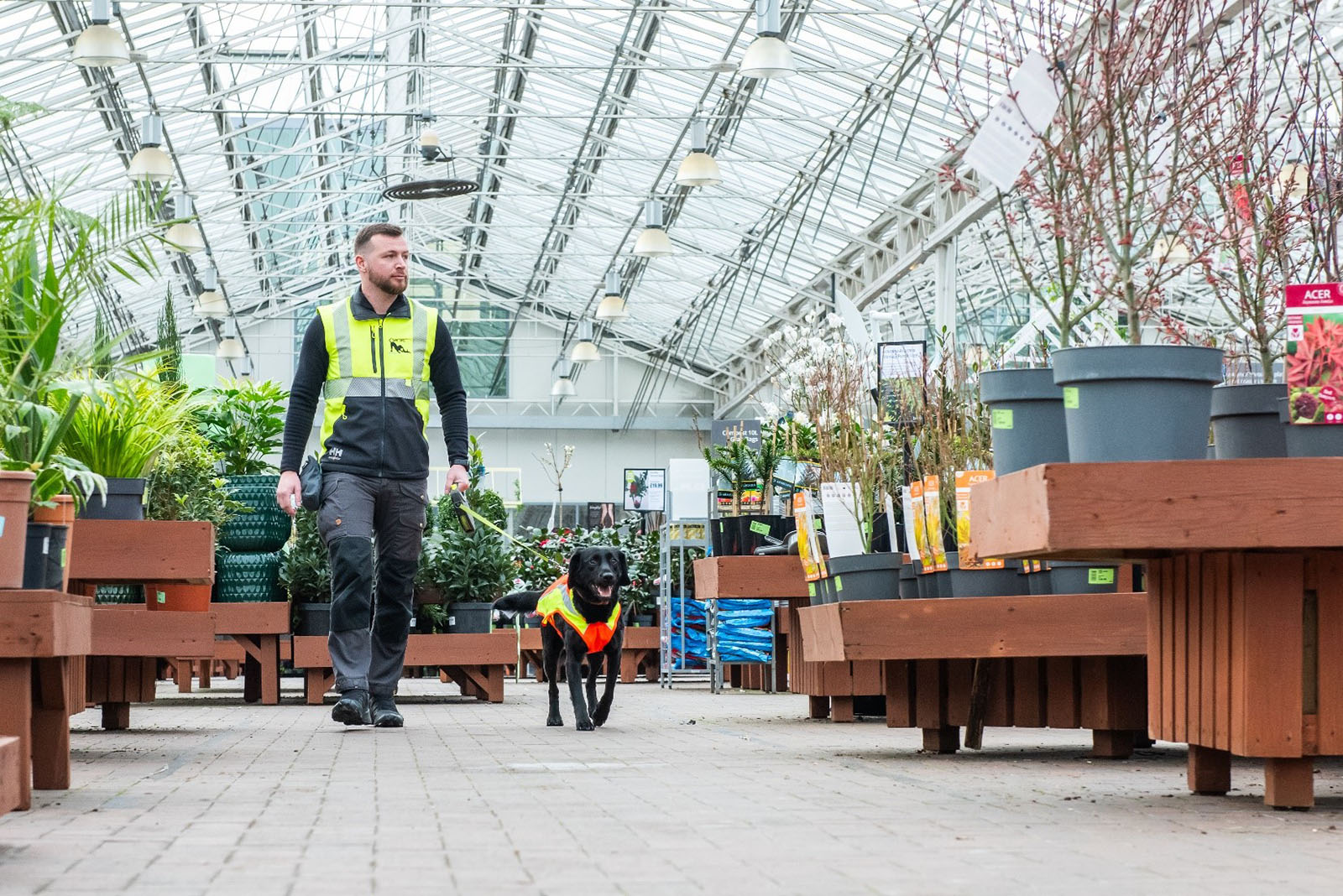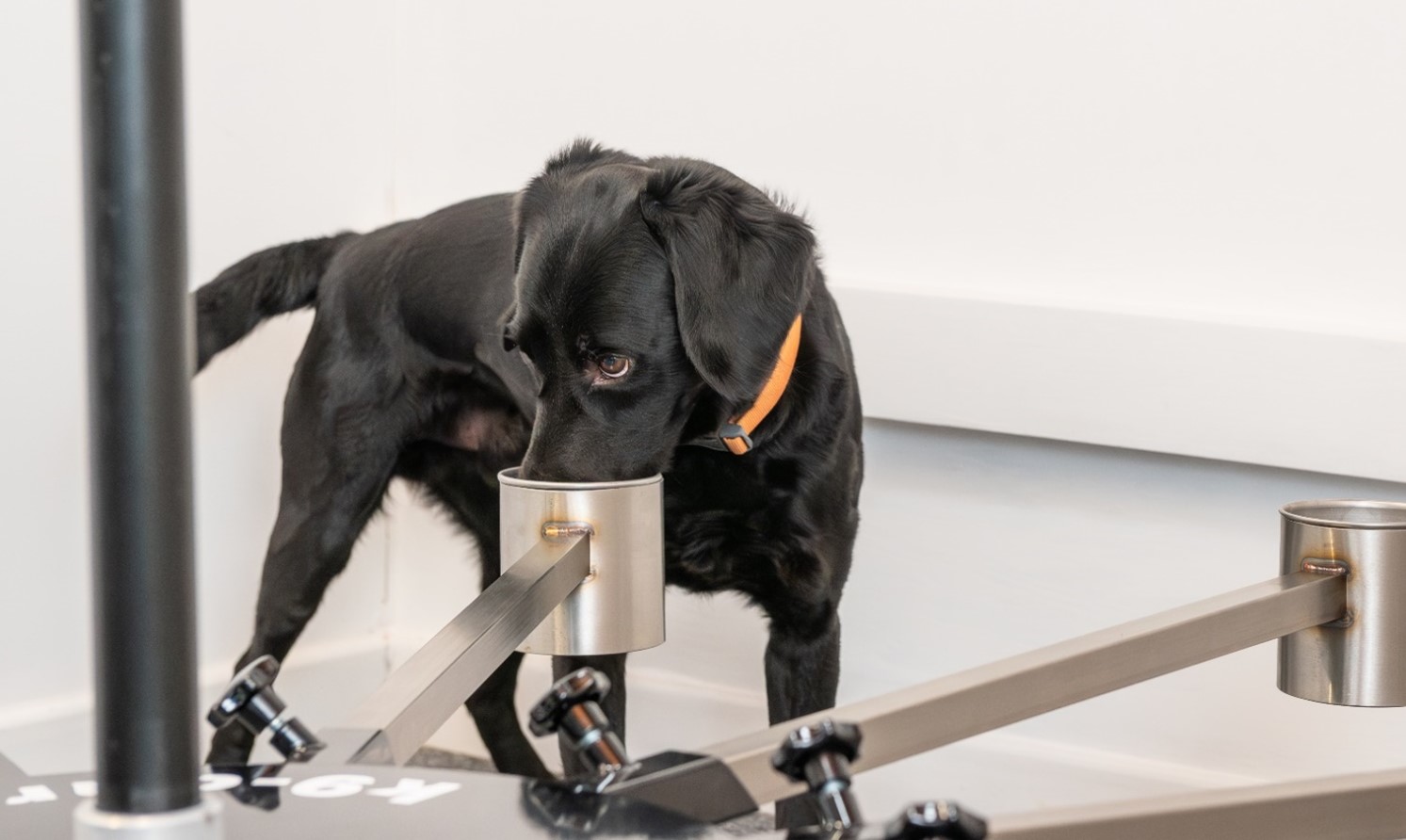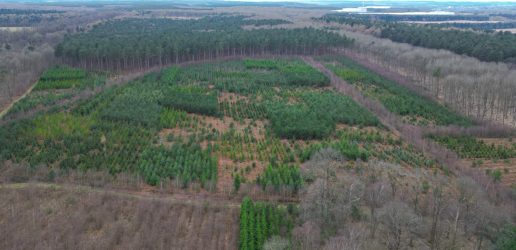Detection dogs have been used in the UK to successfully identify tree disease, helping track down the deadly tree pathogen Phytophthora ramorum.

In collaboration with Forest Research, Canine Assisted Pest Eradication successfully trained Ivor, a cocker spaniel x labrador, aged six, to identify the highly destructive pathogen. This destructive organism can cause extensive damage and even death to more than 150 plant species including significant mortality on larch, which are important timber trees.
Ivor was trained using a variety of detection training techniques including initial scent recognition. The first round saw Ivor successfully identify Phytophthora ramorum in soil, plant material and sterile distilled water. Further training phases saw Ivor faced with a number of scenarios which helped reinforce his detection abilities by introducing new working environments. Ivor was then able to build up to distinguishing Phytophthora ramorum from the scent of other Phytophthora species often found in the same environments to ensure effectiveness in real-world scenarios.
“The results from the trials have been incredibly encouraging, with a first-time 89 per cent detection rate highlighting the huge potential of dogs in our fight against pests and diseases,” said Forest Research Pathologist, Dr Heather Dun.
“Biosecurity is incredibly important and detection dogs like Ivor are an exciting new method for helping to protect our trees.”

The Defra funded project is a collaboration between Forest Research and Canine Assisted Pest Eradication.
“We believe that innovation drives progress,” said Luke Jones, director of Canine Assisted Pest Eradication. “We’re passionate about discovering the potential of detection dogs who are one of nature’s ‘super-computers’.”
Forest Research and Canine Assisted Pest Eradication have previously worked together on insect proof of concept projects, testing dogs’ ability to detect Great spruce bark beetle (Dendroctonus micans) and, more recently, Emerald Ash Borer beetle.
Detection dogs have previously been used to tackle the outbreak of the Asian longhorn beetle pest in Paddock Wood, Kent, in 2012, where a team of dogs from the Austrian Plant Health Inspectorate successfully helped to detect the beetle.
Following the success of the initial trials, Forest Research is now exploring the use of detection dogs to help combat other pests and diseases such as Ips typographus, also known as the eight-toothed spruce bark beetle.
Recent News
View All news
Seventeen coniferous tree species show early promise for future commercial timber production in the UK
Researchers have set up a network of nine large scale experiments across the UK to test the suitability of 17 tree species as potential alternatives for future commercial timber production.
Forest Research are looking for people involved in the harvesting, processing, transport, import, or trade of firewood in Scotland to complete an important survey.

New guide to help local authorities conduct a people survey on the social value of their treescapes
A new step-by-step guide to help local authorities, charities and civic societies carry out a people survey to understand social and cultural values related to trees in their area, is now available.

Seventeen coniferous tree species show early promise for future commercial timber production in the UK
Researchers have set up a network of nine large scale experiments across the UK to test the suitability of 17 tree species as potential alternatives for future commercial timber production.
Forest Research are looking for people involved in the harvesting, processing, transport, import, or trade of firewood in Scotland to complete an important survey.

New guide to help local authorities conduct a people survey on the social value of their treescapes
A new step-by-step guide to help local authorities, charities and civic societies carry out a people survey to understand social and cultural values related to trees in their area, is now available.

